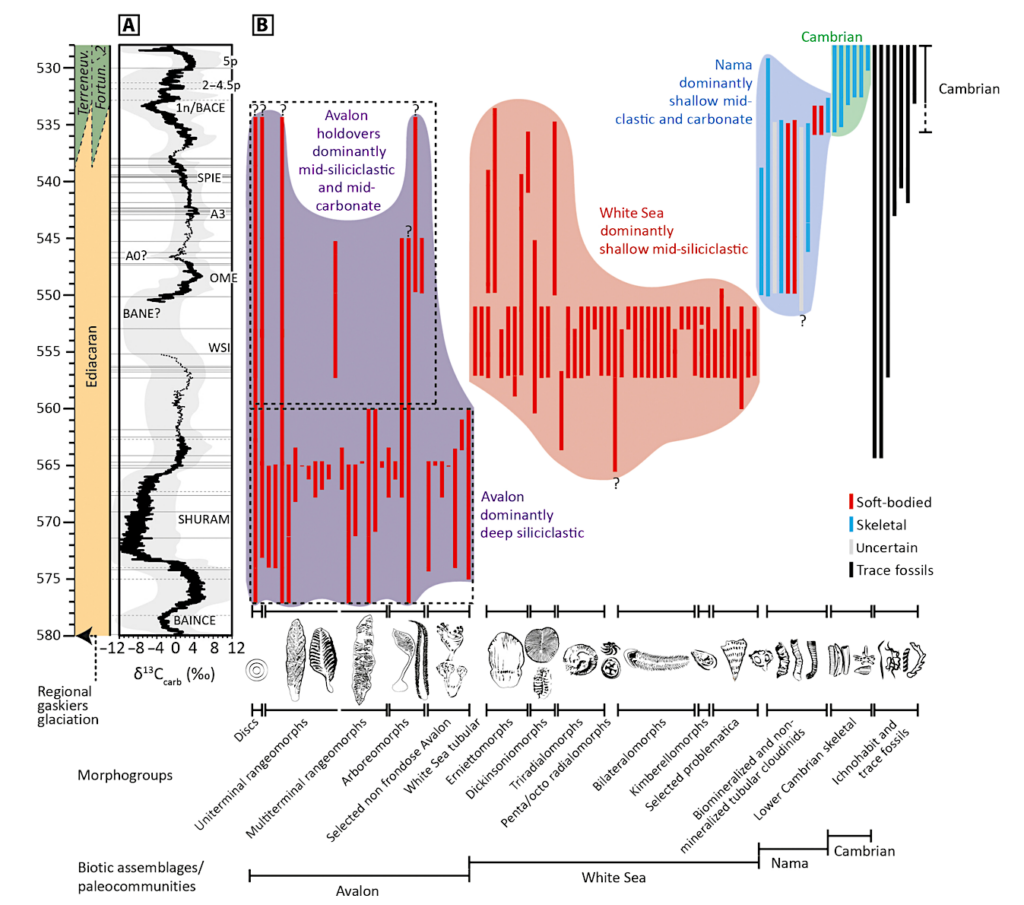
Earth as seen by the Apollo 4 mission in 1967 – NASA
A newly developed timeline of early animal fossils reveals a connection between sea levels, changes in ocean oxygen and the appearance of the earliest ancestors of today’s animals.
The study sheds light on the forces that drove the evolution of the earliest organisms, from which all major animal groups descended.
A team from the University of Edinburgh examined a collection of rocks and fossils from the so-called Ediacaran-Cambrian period – a period between 580 and 510 million years ago. According to fossil finds, this period saw an explosion in biodiversity, the causes of which have puzzled scientists since Charles Darwin.
The early animals from this period were all marine creatures, at a time when the oxygen levels in the air and sea were much lower than they are today.
While the very first life forms before this time were mostly single-celled and simple multicellular organisms, in the Ediacaran, living things began to become more complex: they had multiple cells and were organized into body plans that enabled them to feed, reproduce, and move across the sea floor.
This era also saw the emergence of the so-called bilaterian organism, the symmetrical body structure of most species living today, including humans.
By compiling data from a variety of sources—including radioactive dating and geochemical information about the rock layers in which fossils were found—the team compiled all of the major fossil finds and various environmental data sets into a single timeline.
The new chronology allowed the team to examine biodiversity trends for the period in more detail than before.
Combining these findings with other chemical evidence from geological records, they confirmed a link between major changes in global sea level, periods when shallow marine environments received more oxygen, and the appearance and diversification of early animal groups.
These dynamics set the stage for several major bursts of biodiversity known as the Avalon, White Sea and Cambrian bursts, each marking the arrival of new groups of animals and the decline of others.
By reconstructing environmental conditions in ancient times, the study provides new insights into the prehistoric forces and pressures that shaped the earliest life on our planet.
The team also identified gaps in the fossil record, suggesting that current knowledge about early animals is distorted by the large number of sites around the world where fossils have been found and studied.
Dr Fred Bowyer, from the School of Geosciences at the University of Edinburgh, said: “Constructing a timescale of early animal evolution from the rock record is a huge task that can only be achieved through international and interdisciplinary research. But an integrated global approach is crucial. It uncovers biases in our records while revealing patterns in fossil discovery, sea level cycles and environmental oxygen levels.”
Mariana Yilales Agelvis, a PhD student in the Department of Earth Sciences and co-author of the study, said: “Knowing what drives biodiversity is a fundamental piece of knowledge in the puzzle of life. I feel very privileged to be able to build on decades of interdisciplinary global research and contribute to a better understanding of the role that sea level plays in the early evolution of animals.”

Integrated chronology and biostratigraphy of globally distributed Ediacaran to earliest Cambrian successions. (A) Radiometric ages (horizontal lines; Table S1) calibrate the 10-point moving average of an updated global composite δ13Ccarb database (Data S1 and S2 updated after (18, 28, 30)). Gray shaded envelope indicates uncertainty in the δ13Ccarb framework associated with data scatter. (B) Compilation of estimated ranges of major Ediacaran to earliest Cambrian (580 to 528 Ma) derived metazoan morphogroups and major trace fossil groups within the Avalon, White Sea, Nama, and Cambrian assemblages showing the dominant sedimentary setting of host successions. Age ranges, uncertainties, and full references for the biostratigraphic database are included in Data S1. Modified from (18, 24). Question marks indicate taxa with the most uncertain maximum/minimum age constraints. See Fig. S2 for an expanded version of this figure. SPIE, Spitskop excursion; OME, Omkyk excursion; WSI, White Sea Interval; BAINCE, Baiguoyuan negative carbon isotope excursion. — Science Advances
The article was published in Science Advances and funded by the Natural Environment Research Council (NERC).
Sea-level controls on the Ediacaran-Cambrian animal radiation, Science Advances (open access)
Astrobiology
